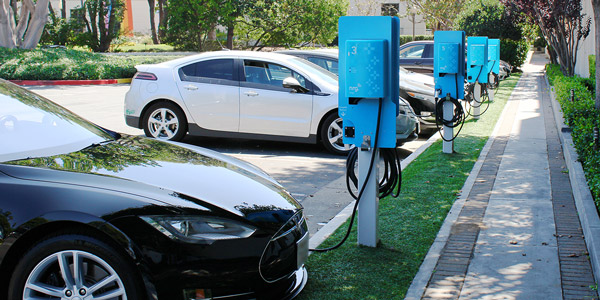By Robert Mullin
Despite President Trump’s moves to dismantle his predecessor’s climate change policies, Pacific Gas and Electric isn’t having second thoughts about its strategy of capitalizing on California’s greenhouse gas reduction goals, the utility’s new chief executive said.

PG&E earned $576 million ($1.13/share) during the first quarter of this year, compared with $107 million ($0.22/share) during the same period a year ago, when the utility recorded $381 million in expenses related to the September 2015 Butte Fire. The blaze was sparked after a tree came into contact with a company-owned power line.
Operating revenues for the quarter were up 7.4% to $4.27 billion on a 43% increase in natural gas sales, just under a third of which was attributable to booking out-of-period revenues stemming from a 2016 decision by the California Public Utilities Commission related to the previous under-collection of gas transmission fees. PG&E’s electricity sales were down 2% from a year earlier to $3.07 billion.
Williams said that California’s transition to a cleaner economy would require state regulators to enact measures that “ensure a fair allocation” of electric supply costs to investor-owned utility customers that choose to depart for the state’s growing number of community choice aggregators (CCAs) and direct access energy providers.
Last month, the state’s three IOUs — which also include Southern California Edison and San Diego Gas & Electric — recently filed a proposal with the PUC seeking changes in how the utilities’ costs for legacy energy contracts are allocated among existing and departing customers. That plan is intended replace the current power charge indifference adjustment (PCIA) with a new system the utilities have dubbed the portfolio allocation methodology (PAM). (See Utility Proposal Would Increase Legacy Costs for California CCAs.)
“As California continues to engage in discussions on the ‘utility of the future,’ we view this as a foundational step for the continued growth of CCAs or other choices that our customers may have in the future,” Williams said, noting that the state’s CCAs also agree about the need to reform the PCIA.
PG&E has also kicked off a $130 million pilot to build the infrastructure to support 7,500 electric vehicle charging stations over the next three years. The utility’s service area currently contains about 5,000 charging stations, a number that’s expected to reach 150,000 by 2025.
The company earlier this month filed an additional request to spend $250 million to support the charging of medium- and heavy-duty vehicles, such as transit buses.
Williams couldn’t provide a definitive answer to an analyst question about whether PG&E would enter the competitive space of retail charging in addition to participating in the regulated side of providing the supporting infrastructure.
The utility is in a “great position to put in the make-ready” for the charging stations that will facilitate the adoption of EVs, Williams said.
“Looking beyond a regulatory play, we have to really take a look at the economics and the financing and the whole nine yards to see whether [the retail side] really makes sense for us,” she said.




